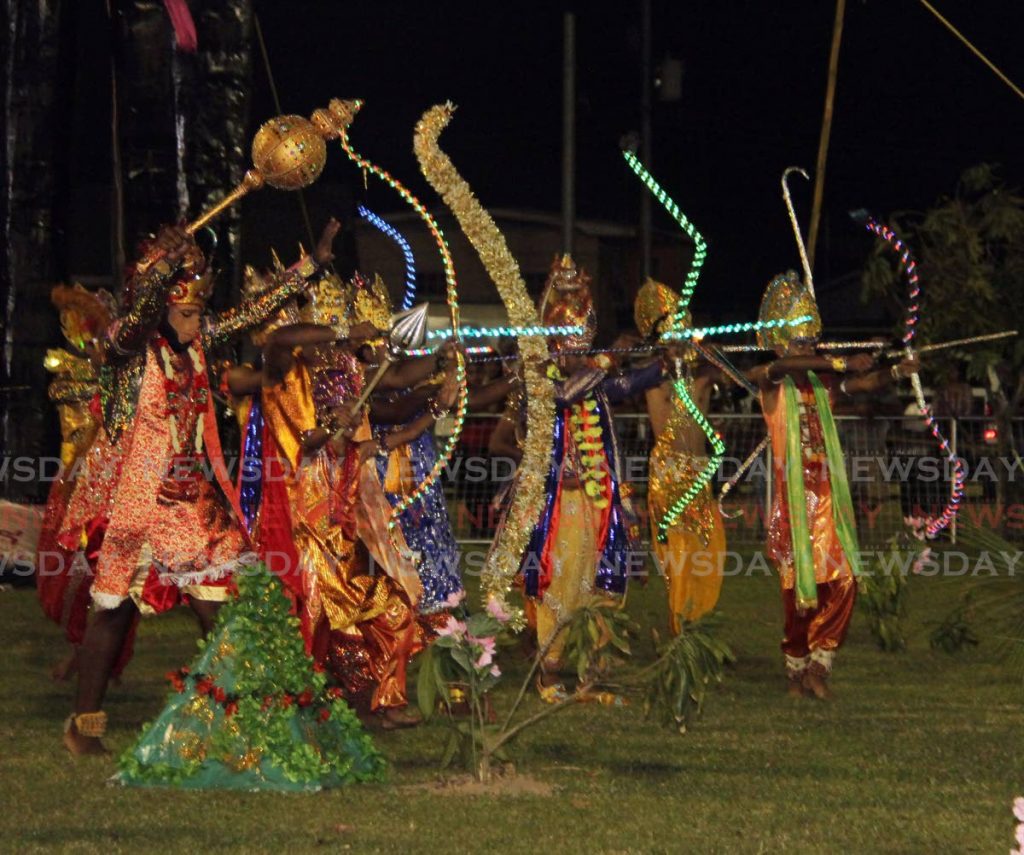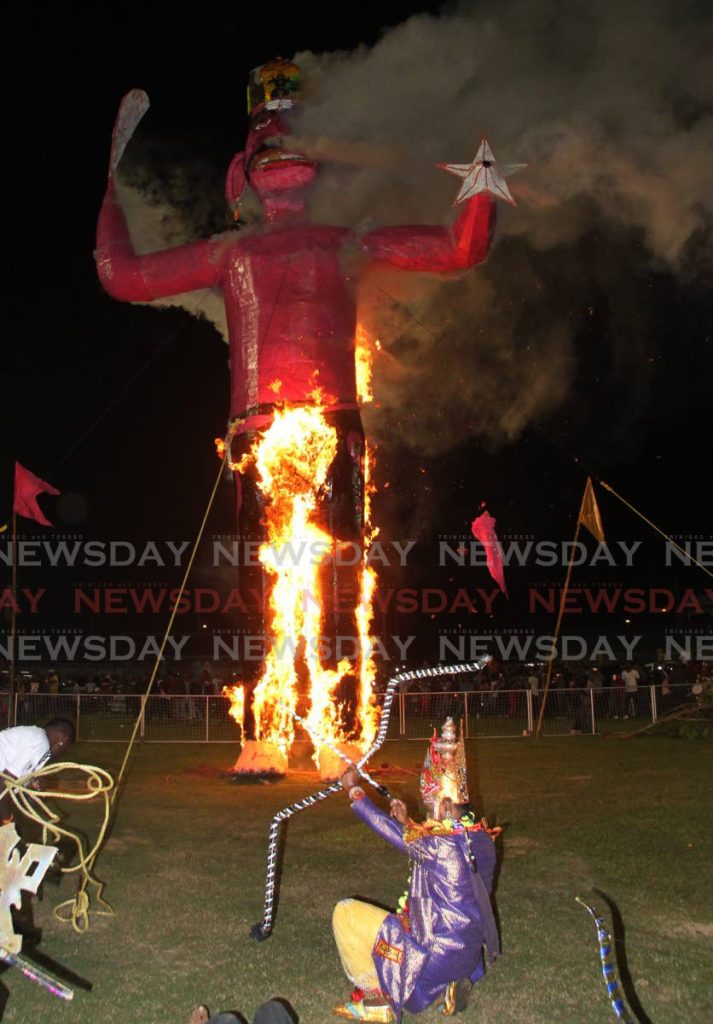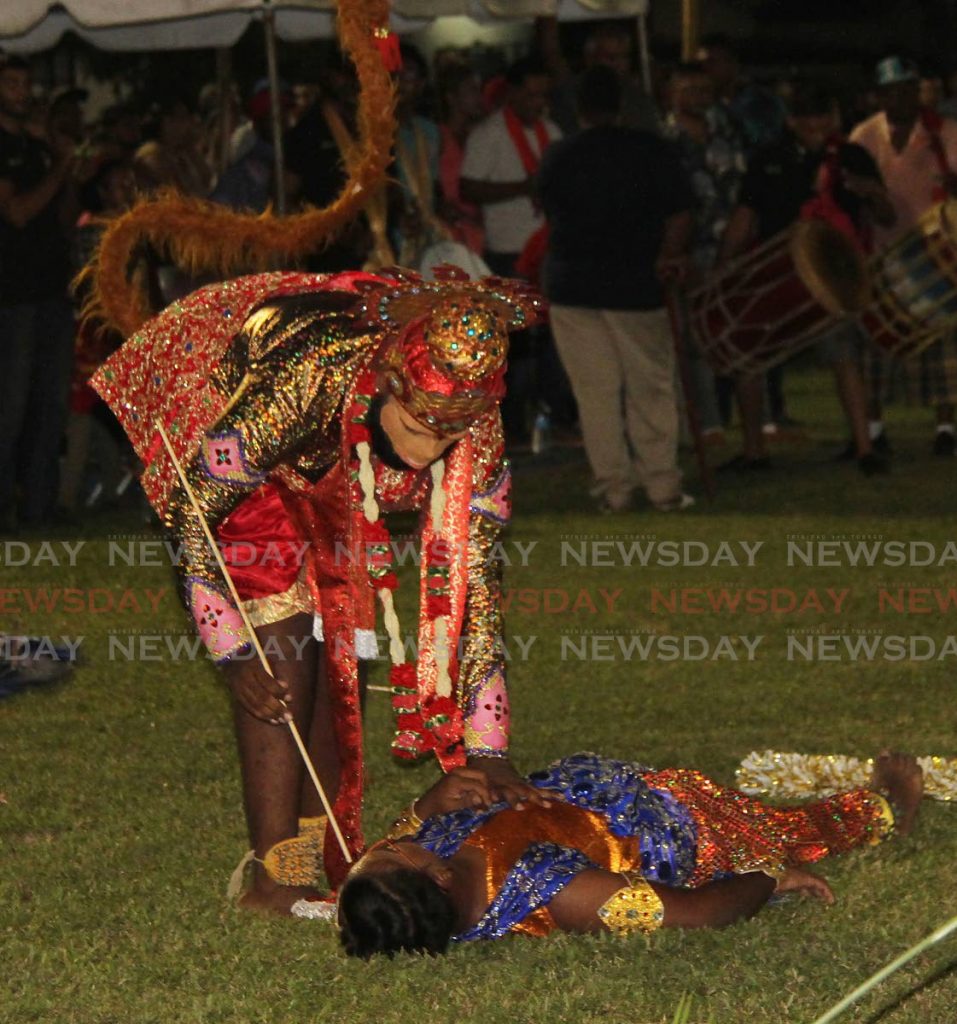Ramleela virtual vibrations

DR SATNARINE BALKARANSINGH
THE 2020 Ramleela festival came off in a virtual format as a result of the covid19 restrictions. And despite fears that performing arts and artistes are suffering because of the pandemic, the Ramleela festival was well represented, as attested to by some speakers, including artist, writer and director Rawle Gibbons.
While the village theatrical spaces were devoid of action, the National Ramleela Council mounted activities via Zoom from October 23-25. With roughly two and a half hours each night, Ramleela groups performed invocatory items and displayed their video recordings of their past performances. This was accompanied by discussions and presentations of the work of the Ramleela groups.
The virtual audience included the Minister of Community Development, Culture and the Arts, Randall Mitchell, on the opening night. There were presentations on various aspects of the festival, including the technology going into the innovative designs and construction of effigies. An illuminating presentation was made by Trevor Sieunarine, of the Sangre Grande SWAHA Ramleela performance group, on the local, technological innovations in the construction of the effigy of Rāwana.
Over 35 Ramleelas exist in TT and are usually performed throughout the country. Up to last year combined audiences to these dramatic enactments were in the vicinity of 250,000-300,000 annually. People attend the performances for various experiences, some to hear the chanting of the verses, the music and the tassa drumming, others to see acting. They support their village actors, both the budding ones and the veterans playing specific roles for years. They support the young children who also perform and learn through a village mentoring process. The village becomes a beehive of activity; costume stitching/making, face and body make-up, props and décor fabrication.

Ramleela performances have moved from day to more evening and night productions. The costumes, head and battle gear, the bows and arrows, are fabricated to catch and reflect lights, not to mention the use of fire projectiles exploding into the night sky during battle scenes. The scripts are written to keep the audiences in a state of excitement. Live tassa drumming enhances this activity, even during the daily performance – which can go from between three and 11 days, depending on the script used.
The audience can even be transformed into participants, performing arti and singing
Shri Ram Chandra ke Jai. When they follow Ram around the village the audiences become pilgrims. They also get spiritual and religious sustenance. There is humour, satire, catharsis, epiphany, synthesis; and entertainment. There is invariable entertainment on the periphery of the village performance stages. referred to as the Ramleela or Ramdilla grong. There is village commerce; selling local foods, drinks, condiments and confectionaries. Villagers meeting friends and exhibit the latest in Indian and western fashion in clothes. There is gossip, village gossip.
Ramleela is a story of the life and deeds of the hero Prince Ram of Ayodhya in Northern India. The story is first told, in epic proportions, by the Saint Valmiki. It is contained in the story of the book the Ramayana (
Rama-Yana, or the story of Ram). It predates the Christian era by several millennia and has been told in countless versions; transcending time and space.
The story is long and winding. It tells of his Rama’s birth, life with his family, his education, training, marriage, exile and battles; the final one being with King Rawan to release his abducted wife Sita. It ends with the reign of Ram in Ayodhya (
Ah- no;
Yudh- war) the period of peace. As an epic, a long story, narrated in poetic language, it contains approximately 84 sub-stories or kathas in seven books (Balakanda, Ayodhyakanda, Aranyakanda, Kiskindhakanda, Sundar Kand, Lanka Kanda and Uttarakanda).

Ram is first referred to as Maryada Purshotama – the first man among men – the ideal man teaching the society on how to live an ideal life with moral and ethical values; as son, brother, husband, as leader, warrior, and then as a king, governing his kingdom. First narrated in the ancient, though still existing Sanskrit language – Hindu rituals and sacred chants in TT are conducted in the Sanskrit language – and then narrated over millennia by various writers in more than 25 languages including Sanskrit, Hindi, Urdu, Thai, Indonesian, Tamil, Telugu, Oriya, Nepalese, Bhojpuri, Magadhi and dialectic Indo-Caribbean. In fact, it is narrated in the major languages and translated into the languages of the countries to which it has been planted and rooted; Fiji, Guyana, Suriname and TT.
The term Ramleela, however, is applied to the folk rendering and presentation of the story, as told by Sage Tulsidas in the Ram charitmanas (1574-1577 AD). The Rāmacharitamānasa (Holy Lake of the Arts of Rama) is Tulsidas’ 16th-century reinterpretation of the original story of Valmiki. Local, home-grown Ramleelas use the script of the Tulsidas Ramcharitmanas (written from 1574-1577). Saint Tulsidas combined several versions of the original story in Awadhi Script, the language of the common man in India, who arrived in Trinidad as indentured workers to work the colonial plantations.
The scripts of the vast majority of dramatic village versions of this Ram story, village Ramleela, in India. are still taken from the Ramcharitmanas. Ramleela was brought here and planted in this soil since Indian immigrants arrived in TT to help save the failing economy. Historical evidence, however, indicates that the first Ramleela was staged in 1882 in an opening in the sea of cane, in Dow Village, California, in Central Trinidad.
TT’s Ramleela remains a catalyst for community development. The festival is constantly repainting the local environment, giving it an Indo-Trinbagonian aesthetic look. It is a mela, a carnivalesque happening, of happy fusion and exciting confusion. It is an integral part of Caribbean culture, especially southern Caribbean culture.
Dr Satnarine Balkaransingh is an artist, economist and author of The Shaping of a Culture; Rituals and Festivals of Trinidad compared with Selected Counterparts in India (UK: Hansib, 2016); www.kathakkalasangam.com; Satbalkaransingh @gmail.com


Comments
"Ramleela virtual vibrations"